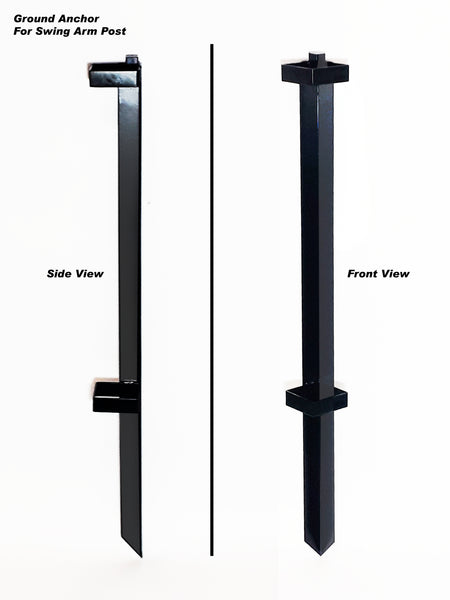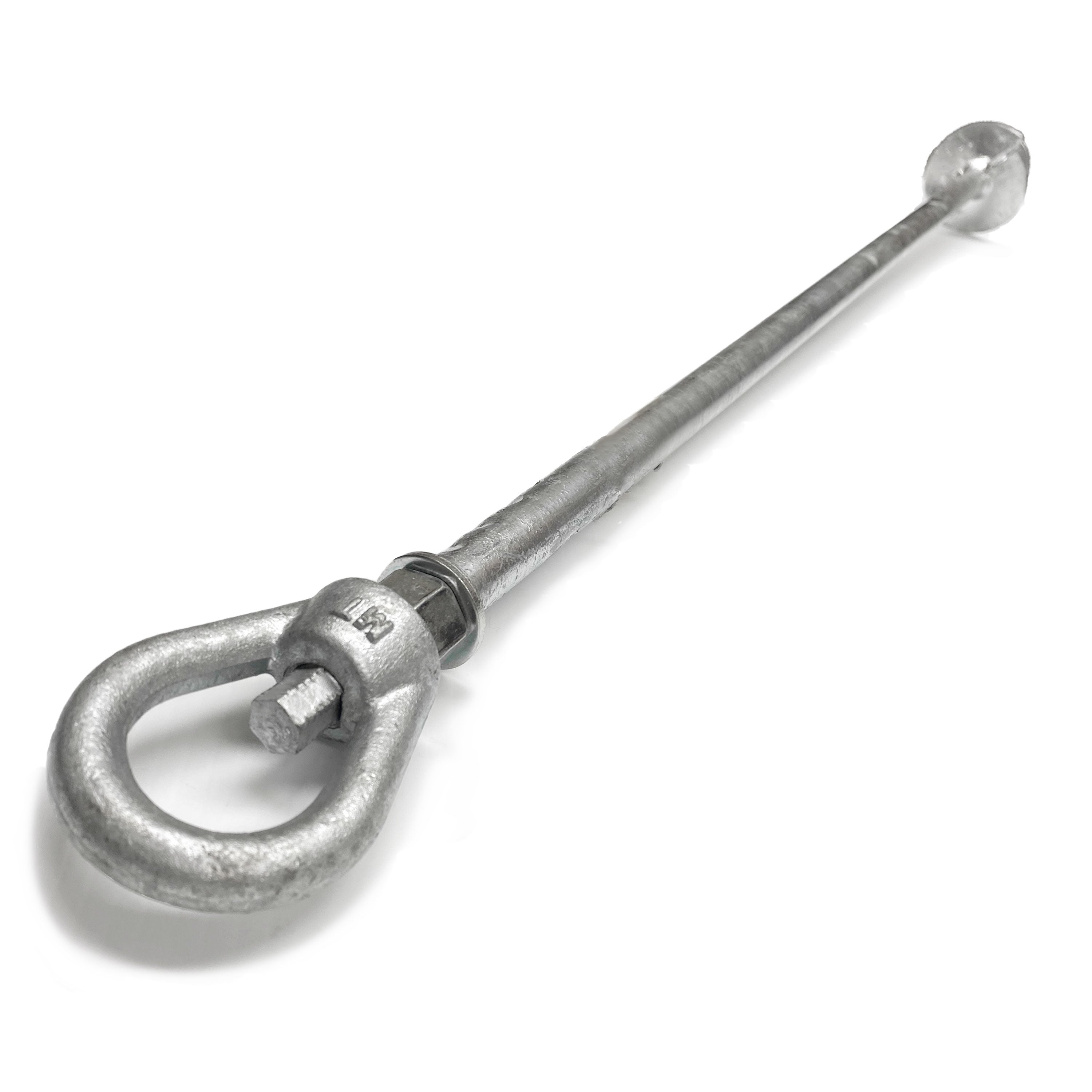Top Methods to Install a Ground Anchor for Maximum Strength
Top Methods to Install a Ground Anchor for Maximum Strength
Blog Article
Discover the Various Sorts Of Ground Support for Your Following Task
When starting a building or landscape design job, recognizing the numerous sorts of ground supports readily available is important to guaranteeing both stability and sturdiness (Ground Anchor). From auger anchors, which stand out in diverse dirt problems, to stake supports developed for temporary setups, the options are various. Additionally, concrete and screw supports present special advantages in specific circumstances, while deadman anchors are tailored for applications needing resistance to lateral pressures. The option of a suitable support type can considerably affect the general success of your job, prompting more expedition into their particular advantages and applications.

Auger Anchors
Auger anchors are a popular choice in different building and landscape design jobs due to their special design and efficient anchoring capacities. These supports contain a helical screw-like shaft that is driven into the ground, enabling a safe and secure and steady hold. The spiral style facilitates simple installment and makes the most of resistance against side pressures, making auger supports especially reliable in applications such as fence, momentary structures, and erosion control.
The installment procedure of auger anchors is fairly straightforward. Auger supports can be easily eliminated and reused, which adds to their cost-effectiveness and sustainability.
One of the significant benefits of auger anchors is their ability to distribute tons uniformly throughout the surrounding dirt, lowering the threat of soil disruption and lessening ecological effect. In addition, they are less vulnerable to heaving or loosening with time compared to traditional securing methods. Auger anchors are an outstanding selection for tasks calling for sturdy and trustworthy anchoring solutions.

Risk Anchors
When it involves protecting structures in a range of exterior applications, risk anchors supply a simple and trustworthy remedy. These supports are usually constructed from resilient products such as steel or aluminum, created to endure environmental tensions while giving ideal stability. Their easy style enables for quick installment, making them an ideal option for long-term or temporary anchoring requirements.
Stake supports are particularly useful in safeguarding camping tents, covers, and other lightweight structures versus wind and weather condition. They function by being driven right into the ground at an angle, producing a solid hold that withstands pull-out pressures - Ground Anchor. The efficiency of risk anchors depends on a number of variables, including soil type, dampness content, and the angle of installation
For added security, numerous risk anchors include add-on factors for ropes or straps, permitting stress modifications as essential. In applications such as landscape design or building, they can effectively stabilize devices or structures on irregular terrain. In general, stake anchors offer a cost-effective and versatile service for protecting different outside installations, making them a preferred selection for specialists and DIY lovers alike.
Concrete Anchors
Concrete anchors offer a robust option for securing frameworks to concrete surface areas, guaranteeing stability and safety in various applications. These supports are important for tasks ranging from domestic buildings to massive industrial installations. They can be found in various types, consisting of expansion supports, adhesive anchors, and undercut anchors, each designed for certain load requirements and environmental conditions.
Development anchors depend on mechanical mechanisms to hold the concrete when installed. They are suitable for medium to heavy-duty applications. Glue supports make use of high-strength epoxy or material to bond the anchor to the concrete, providing superior load-bearing capabilities, specifically in broken concrete situations. Undercut supports develop a distinct shape within the concrete, supplying extraordinary holding power, particularly in applications where tensile lots prevail.
When implemented properly, concrete supports considerably improve the structural honesty of different tasks, making them vital in modern-day building practices. Recognizing the particular needs of your task will certainly help in selecting the best type of concrete anchor for the job.
Screw Anchors

Screw anchors are a flexible securing option that can be efficiently utilized in a range of applications where standard concrete anchors might not be adequate. These supports consist of a helical layout that allows them to be conveniently driven right into the ground, making them perfect for use in dirt and other substrates. Their one-of-a-kind structure offers excellent holding power and resistance to pull-out forces, making them suitable for countless jobs, view it from landscaping to architectural support.
Among the key advantages of screw supports is their convenience of installment. They require marginal tools and can frequently be set up without the requirement for excavation, which conserves both time and labor costs. you could look here In addition, screw anchors can be eliminated and recycled, providing a sustainable option for short-term applications.
Screw supports are specifically valuable in locations where soil conditions are testing, such as sandy or loose dirts. Their capacity to be installed at differing midsts enables modification based on certain task demands. In general, screw supports provide a dependable and efficient securing method, making them an exceptional selection for contractors and designers seeking effective services for their projects.
Deadman Anchors
Deadman supports function as a robust option for supporting structures in difficult conditions, particularly where typical securing approaches might fall brief. These supports contain huge, heavy objects hidden underground, which create resistance against lateral forces. The design generally involves a straight element, such as a block of concrete or a steel plate, hidden in the soil, to which cable televisions or straps are connected.
The performance of deadman anchors exists in their capability to distribute loads over a bigger location, minimizing the threat of failing in unstable soil conditions. They are particularly useful in applications such as keeping wall surfaces, short-term frameworks, and incline stabilization, where dirt movement can endanger the stability of the framework.
Setup of deadman supports calls for careful preparation to guarantee they are positioned at the right depth and positioning, optimizing their load-bearing capacity. While they may need even more labor and product than light-weight try this out supports, their reliability in damaging conditions makes them indispensable for long-term tasks. Additionally, deadman supports are flexible and can be adapted to various applications, making them a go-to choice for engineers dealing with one-of-a-kind obstacles in their tasks.
Final Thought
In recap, choosing the proper sort of ground support is vital for guaranteeing stability and safety in different projects. Auger supports stand out in diverse soil conditions, while stake supports suit temporary applications. For concrete surfaces, growth and adhesive anchors offer trustworthy choices, and screw supports offer versatility in tough terrains. Deadman anchors are specifically effective in standing up to lateral pressures for maintaining wall surfaces. Mindful consideration of these options will certainly boost task results and architectural stability.
In addition, concrete and screw supports present one-of-a-kind benefits in details scenarios, while deadman anchors are tailored for applications calling for resistance to side forces - Ground Anchor.Auger anchors are a prominent option in different building and landscaping jobs due to their unique design and efficient anchoring abilities. They come in different kinds, including expansion anchors, sticky anchors, and undercut anchors, each designed for specific load demands and ecological conditions
Glue supports use high-strength epoxy or resin to bond the support to the concrete, providing remarkable load-bearing abilities, particularly in broken concrete situations. Overall, screw anchors give a reliable and efficient anchoring technique, making them an excellent selection for engineers and contractors looking for effective remedies for their projects.
Report this page